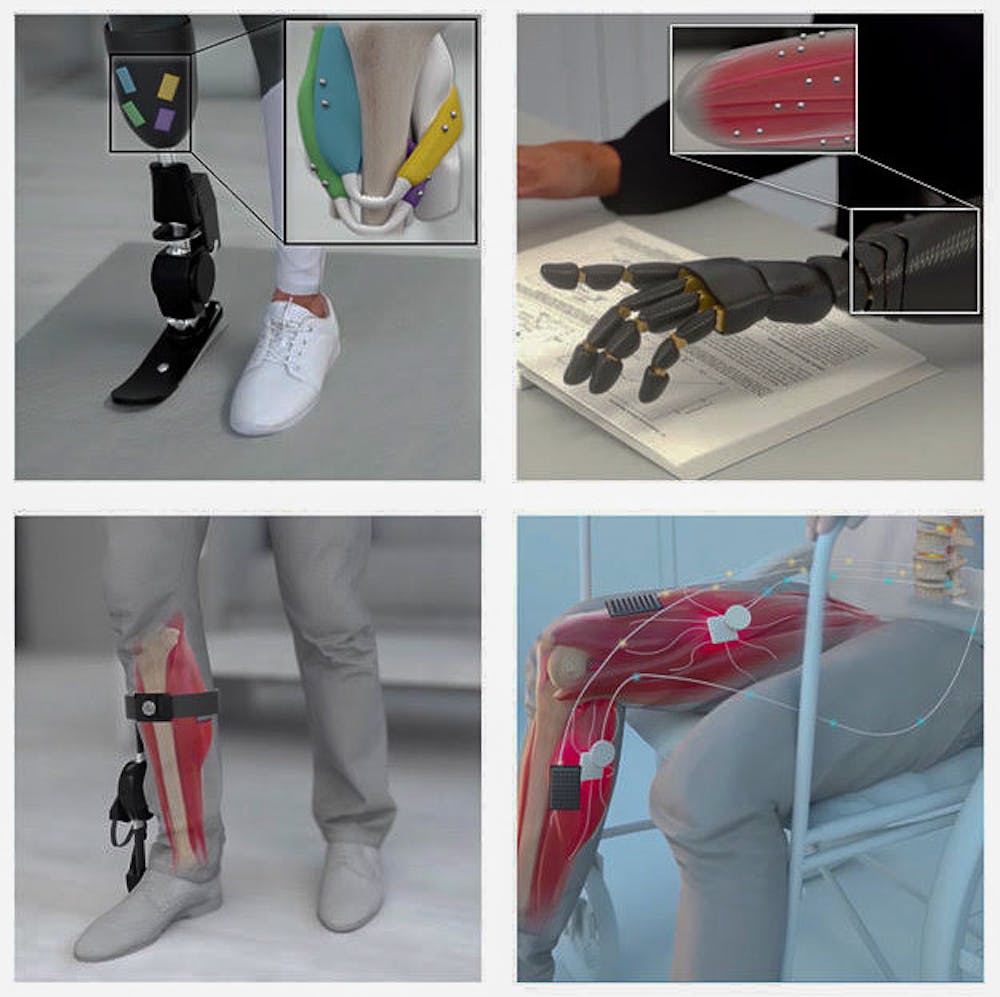Two research papers published by Brown and MIT researchers last month focus on the possibility of employing improved muscle tracking technology to advance prosthetics.
Magnetomicrometry, the technique explored in the papers, involves inserting miniature magnetic beads directly into muscle tissue and using external magnetic sensors attached to the outside of the limb to triangulate the location of the beads in space, Thomas Roberts, a co-author of the papers and vice chair of the department of ecology and evolutionary biology, wrote in an email to The Herald. The sensor information picked up from the beads is sent wirelessly to a nearby recording device, which uses the location of the beads to measure changes in muscle length in real time, Roberts added.
One of the research papers analyzed the accuracy of magnetic tracking by implanting beads into turkeys and recording their movements as they ran on a treadmill at various speeds, according to Roberts.
Results from this paper showed that tracking was accurate to measurements smaller than a millimeter, outperforming existing techniques, according to Ellen Clarrissimeaux, a research support associate at MIT and co-author of the paper.
“Magnetic tracking was so accurate that we can now use it as our ground truth in other experiments,” Clarrissimeaux wrote in an email to The Herald.
The other paper investigated the clinical viability of the implants. Researchers found that the magnetic beads, which are coated in gold and parylene, could be implanted in humans without causing irritation, inflammation or other health problems, Roberts wrote.
While different methodologies for tracking muscle movement have been used in past studies, none of them support wireless tracking and can be done outside a lab, according to Mary Kate O’Donnell, a former postdoctoral researcher in Roberts’s lab and a co-author of the second paper.
One such existing methodology to measure muscle length contractions involves inserting sonomicrometry crystals into limb muscle tissue and transmitting sound signals between them to measure muscle length. But to record muscle length, the crystals must have wires attached to them and be near perfectly aligned — a difficult task when working with free-roaming animals, according to O’Donnell.
While the bead tracking has only been implemented in animals so far, a primary goal is to use it for prosthetic limb control for humans with amputations, according to Cameron Roy Taylor, project lead of the magnetomicrometry project at MIT and first author of both papers.
“When someone receives an upper-extremity amputation, the surgeon preserves many of the muscles they previously used to move their fingers,” in movements such as drumming their fingers on a table, Taylor wrote in an email to The Herald.
“If we have a way to track the movements of these residual-limb muscles in real time,” he added, “we can use these muscle motions … to control a robotic hand.”
Moving forward, the researchers plan to seek Food and Drug Administration approval for implanting the beads in humans, according to Taylor.
Alok Prakash, a researcher at the Council of Scientific and Industrial Research-National Physical Laboratory in India, was not involved in the studies but published a similar paper in September investigating “Hall myography,” a new magnet-based muscle tracking technique.
Prakash wrote in a message to The Herald that, unlike the research in the Brown-MIT papers, the Hall myography technique is non-invasive. He added that his research specifically targets upper-limb prosthesis and has been trialed on upper-limb amputee subjects successfully.
According to Prakash’s paper, most prosthetic limbs are controlled with electromyography, also known as EMG, a way of recording electrical activity from muscles. Although EMG procedures provide information about what the brain is telling the muscle to do, they give no information about the muscle’s speed or length, according to previous research by the MIT group.
Clarrissimeaux said that she sees the ideal prosthetics tracking technology as one that combines EMG with magnetomicrometry. If realized, it would allow for “a full picture of the intended force, length and speed of a muscle … (and) would provide a more complete representation of human intent for controlling a prosthetic device.”
Advancement in prosthetics is important because it enables people to feel physically and mentally empowered in their body, Clarrissimeaux added. “Prostheses are life-changing devices,” she said, “and the more advanced prosthetic technology becomes, the more independent the user of the device is allowed to be.”
Correction: The headline of this article has been to updated to more accurately reflect the content of the paper. The Herald sincerely regrets the error.
Correction: The article previously stated that no previous methodologies had either supported wireless tracking or were done outside a lab. The Herald sincerely regrets the error.
Clarification: The article previously did not explain that sound signals were used to measure muscle length. The article has been updated.
Correction: The article had incorrectly stated how crystals could achieve high accuracy. The article has now been updated. The Herald sincerely regrets the error.





